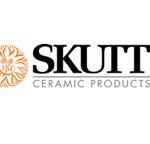Podcast: Play in new window | Download
Janeen Page | Episode 978
As a potter, Janeen Page works exclusively with Aotearoa, New Zealand’s volcanic landscape. Tertiary mudstones, volcanic remnants, and ash form a palette of regional glazes, 26 million years in development. As an artist, Janeen has worked with master potters, geologists, and enthusiasts to research and document glaze sites and recipes throughout New Zealand.
SPONSORS
 You can help support the show!
You can help support the show!

Number 1 brand in America for a reason. Skutt.com

For all your ceramic needs go to Georgies.com
How do you fire your work? A wood kiln? Gas? Charcoal? Electric? Tell me how you fire your work?
So I fire the work to cone ten in a gas reduction kiln. I started with electric but you just don’t get the results that a gas kiln gives you under reduction and wood firing would be even better, but I am on my own and I am urban so a gas kiln works for me.
So you can get some effects with electric but it’s too big of a hinderance for getting the final effects?
Yeah, you definitely need a gas flame rather than elements. The glazes come from time and temperature and heat work and I am working mostly with iron as a colorant, so the colorant works with the time and temperature.
Are there specialty tools that you would need for doing this?
I use a ball mill. It was handed down to me by another potter. It basically mimics nature. It’s balls roiling around in a container like the ocean would be creating sand from rocks tumbling in the ocean. And so all that is doing is breaking down the material to a finer quality.
Is there a grain size if you mill it down too much that it won’t stick to your pottery?
Yes, I learned that as I made my glazes. I made over 88 tests and I milled them for quite a long time and then was told, Oh you might have over milled them. And I was like, Oh! But I put them through a mesh sieve after that as well and my grains that were getting through were enough to balance it. In the past I have got materials from rock grinders and they are quite fine and just fall off the pots. They don’t have that tooth that you need to hold it together on the pot.
Can you test with virtually any kind of rock out there?
Yeah, but why would you? (laughter) There’s so many rocks so igneous rocks, volcanic rocks that have already been altered by heat. The volcanoes have done half the work for you. So an igneous rock has already melted and those are the ones I have searched for and the way the rock lands from the volcano is also important.
What question do you feel like I should be asking that I haven’t asked?
So as a New Zealander I am a Pakeha, I am not Maori, I am not indigenous to the land of New Zealand and a lot of the materials that I use are indigenous to Maori and hold a significance to Maori in this land. Our mountain has just been given it’s title as an Independent Sovereign being so stone and mountains are sacred and just acknowledging that within the country is something I think all makers should be acknowledging where their materials come from and whose land that they are from.
Book

The Faithful Gardner by Clarissa Pin Estes
Contact
janeenpage.com
Instagram: @janeen.page.pottery


 GRPotteryForms.com
GRPotteryForms.com






